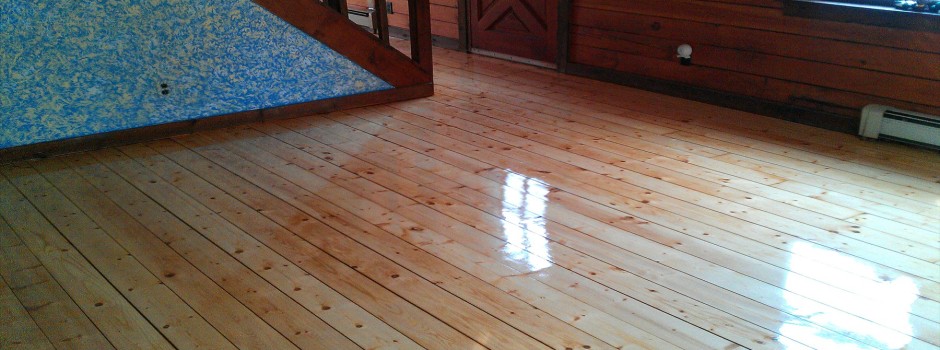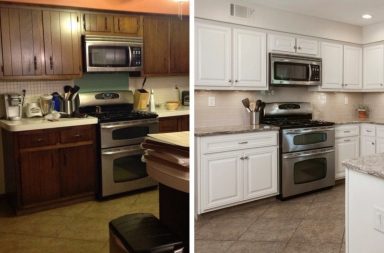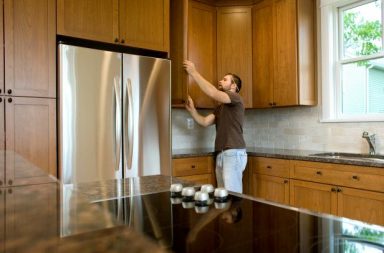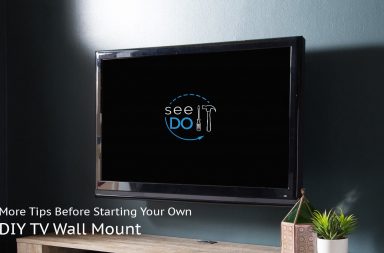You can’t just ‘tear it out’
It’s not as easy as it may seem. You can’t just peel off your old vinyl or linoleum floors. In fact the actual process is one of the more aggravating points of a remodel. It takes time, once you are able to get the vinyl or linoleum off, there are the remnants to contend with – extremely hard clumps of glue that won’t go easily. You could hire a pro to take care of this mess. Or, you can apply a bit of elbow grease and patience and save yourself a substantial bit of cash by doing it yourself.
An often interesting and very helpful option is the possibility of being able to bypass the removal of the flooring material entirely. It’s a reasonably common alternative to put the new floor right on top of the old one. Of course, it’s all based on whether the old floor has retained its smoothness (or is able to be smoothed over) in order for the new floor to lay over it without issue.
In this case, assuming the solution is applicable, a layer of ¼ inch plywood is lowered against the old floor to provide a flat base. Then the new floor is installed on top of that. A similar option is with the use of concrete. You float the old floor with a self-leveling concrete mix that ends up about 1/8 inch thick when dry. The new floor goes over that.
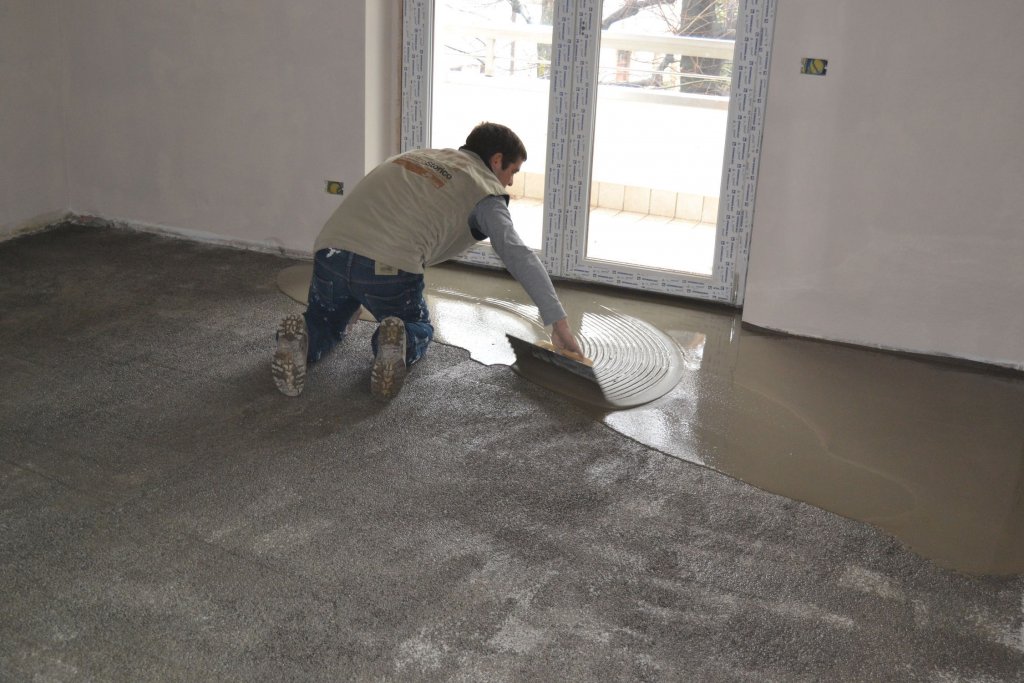
Especially when adding plywood or self-leveling concrete, your floors will become noticeably elevated. This could prevent the kitchen floor from connecting seamlessly with the adjacent rooms. A height discrepancy may result and could potentially cause people to trip (especially the elderly). Be sure your guests are aware of the anomaly, and advise them to “watch your step”. The clearance will also vary under the toe kicks which could lead to problems when it comes to moving the fridge or other heavy appliances.
The process of removing old linoleum or vinyl can be very difficult because the wood underneath (a sub floor) it is attached to is porous and has 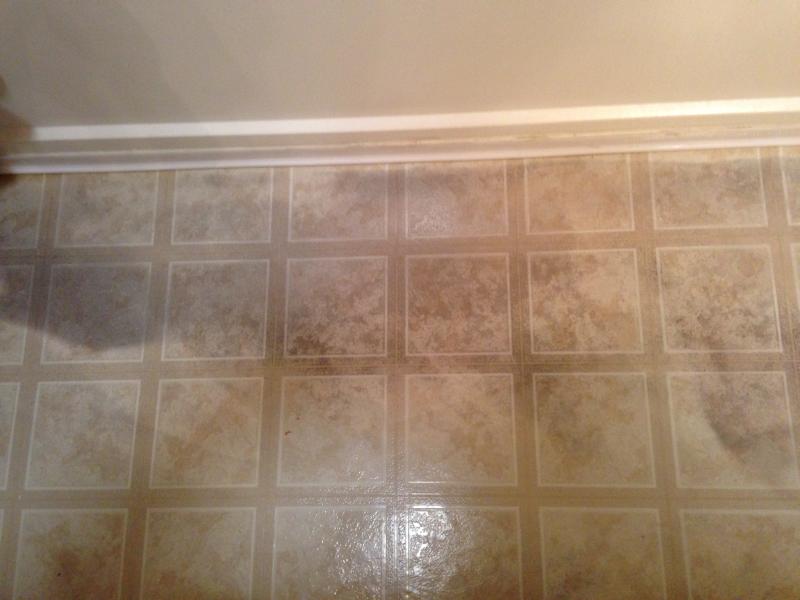 absorbed the industrial strength glues. But it is mandatory to thoroughly rid the surface of all traces of those old glues. Many aged adhesives contain oils and chemicals that react adversely with newer vinyl. Often, the new material becomes discolored, usually yellowed as a result. Making matters worse, most warranties don’t cover that type of damage.
absorbed the industrial strength glues. But it is mandatory to thoroughly rid the surface of all traces of those old glues. Many aged adhesives contain oils and chemicals that react adversely with newer vinyl. Often, the new material becomes discolored, usually yellowed as a result. Making matters worse, most warranties don’t cover that type of damage.
Yet another necessary reason to completely clear the surface of the old glue, especially before putting in vinyl stripping, is because it becomes so brittle. If it were to snap beneath any new covering it could cause problems in the form of bumps and cracks – in your new floor. Another safety concern to be aware of is the presence of deadly asbestos in many old linoleum and flooring adhesives (mostly from the 1970’s). The removal process of such glues can cause a potential health risk. There’s only one way to be certain – break off a small piece and take it to an asbestos abatement firm for testing. Wet the vinyl first and immediately put the sample in a baggie, this will keep possible asbestos fibers from escaping into the air.
For flooring that has been confirmed to be asbestos-free, you have the green light to remove it yourself. When working with a subfloor of plywood, there are two options. The first is to scrape away all of the material and glue. Unfortunately it’s harder than it seems. You need to cut the flooring into parallel strips six inches wide using a utility knife. Then, with a hammer tap the top of a chisel to break loose the linoleum. Pull up the strips, revealing the adhesive and use a paint scraper to remove it. You may need a heat gun to soften the glue to facilitate its removal with greater ease. If you are dealing with a tar based adhesive apply mineral spirits to soften it.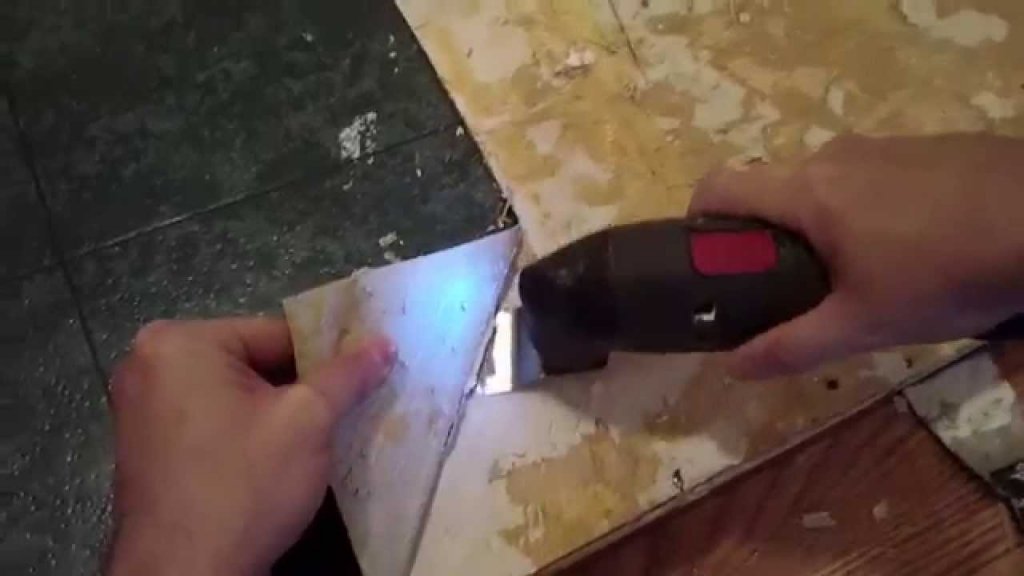
The second option is to just cut out the subfloor with its covering intact and remove it in a few large pieces. First, drill a hole in the floor and determine the thickness of the plywood. Then set a saw blade to reach just a 1/8 inch deeper than that – no more – and proceed to cut away a section of the floor. In order to cut evenly against the walls, use a reciprocal saw (don’t cut the floor joists!). Continue to cut manageable sections approximately three to four feet long until it is all removed.
Who knows, you may even be surprised to discover a perfectly good hardwood floor underneath all of that linoleum. Peel away a bit of the covering to see what direction the hardwood panels run. Cut the vinyl in the same direction as the floor, in about six inch wide strips. Don’t cut against the grain. Cut just deep enough to sever the covering only. Use a heat gun and soften the glue of each strip and peel it off. Scrap the remaining glue away being careful not to damage the floor.
In other cases you may find the vinyl has been covering an old concrete floor. The process is the same, cut out strips then heat and remove them. The difference is you can actually soak the remaining glue with dish soap and water overnight. This will make removal of the pesky substance easier.
Admittedly, these procedures are difficult and time consuming. But they are necessary if you want to replace the floor. It’s up to you, do it yourself and protect your earnings or forgo the physical hassle and let someone else do it!